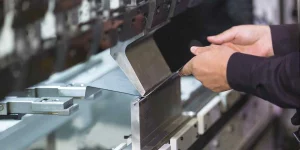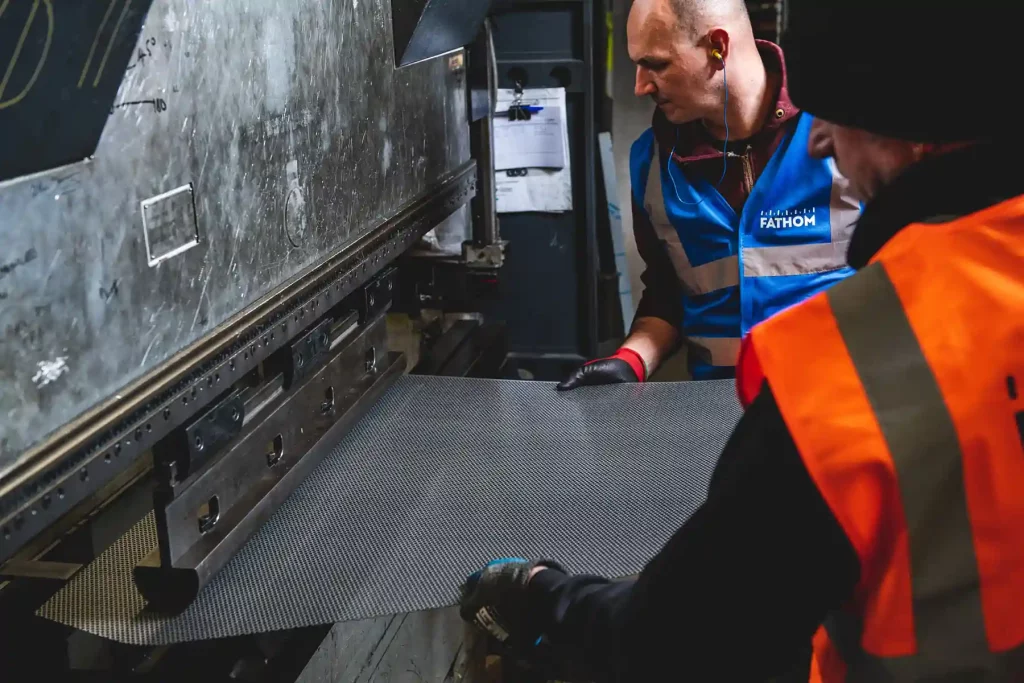Enhancing metal manufacturing efficiency involves integrating advanced automation, robotics, and AI-driven technologies for increased productivity. Implementing lean manufacturing principles and just-in-time production methods helps minimize delays and costs. Operational efficiency is heightened by using accurate cutting tools, automated equipment, and state-of-the-art welding gear. Leveraging technology like laser cutting machines and CNC routers, along with IoT devices for real-time monitoring, ensures a competitive advantage. Tightening ROI through waste reduction and quality control is achievable with efficient fabrication practices. Discover the financial benefits of these strategies in metal fabrication machinery for an industry-leading edge.
Key Takeaways
- Implement advanced automation systems for increased efficiency.
- Integrate robotics and AI-driven technologies for streamlined operations.
- Adopt lean manufacturing principles to minimize waste and delays.
- Utilize laser cutting machines, CNC routers, and 3D printing for precision.
- Embrace IoT devices for real-time monitoring and analysis of processes.
Challenges in Metal Fabrication Efficiency
Efficient Metal Fabrication Processes encounter various obstacles that impact productivity and operational effectiveness in the metalworking industry. Common challenges include ineffective workflow layouts, lack of skilled labor, equipment downtime, and material waste. These obstacles hinder the seamless flow of production, leading to delays and increased costs. Addressing these challenges through strategic planning and creative solutions is essential for enhancing overall efficiency in metal fabrication processes.
Key Strategies for Improved Productivity
Strategically implementing advanced automation systems is a pivotal component in improving productivity within metal fabrication processes. By integrating robotics and AI-driven technologies, tasks can be streamlined, reducing manual labor and increasing efficiency. Adopting lean manufacturing principles, such as just-in-time production and continuous improvement, can further optimize operations. Investing in employee training programs to boost skills and knowledge also plays a critical role in driving productivity and competitiveness in metal fabrication.
Leveraging Technology in Fabrication Processes
Leveraging advanced technologies is crucial for improving operational efficiency in metal fabrication processes. Automation, robotics, and software integration streamline production, reduce errors, and increase output. Laser cutting machines, CNC routers, and 3D printing systems optimize precision and speed. Implementing IoT devices for real-time monitoring and analysis improves decision-making. Utilizing technology in fabrication processes not only boosts productivity but guarantees a competitive advantage in the industry.
Enhancing Operational Efficiency Through Machinery
Using cutting-edge tools and machinery plays an essential role in maximizing operational efficiency within metal fabrication processes.
- Accurate cutting tools for precise results.
- Automated equipment for enhanced productivity.
- State-of-the-art welding gear for stronger joints.
- High-velocity machining centers for quicker production.
- Intelligent technology integration for smooth workflow.
Maximizing ROI With Efficient Fabrication Practices
How can effective manufacturing practices lead to a maximized return on investment in metal manufacturing processes? By implementing efficient fabrication practices such as lean manufacturing principles, automation, and advanced CNC technologies, companies can significantly reduce production costs, minimize waste, and improve overall productivity. These strategies not only streamline operations but additionally improve quality control, ultimately boosting profitability and ensuring a competitive edge in the market.

Frequently Asked Questions
How Can Employee Training and Development Impact the Efficiency of Metal Fabrication Processes?
Employee training and development significantly impact metal fabrication process efficiency by enhancing competencies, nurturing innovation, and ensuring adherence to best practices. Well-trained employees contribute to streamlined operations, reduced errors, and increased productivity in metal fabrication.
What Are Some Common Mistakes to Avoid When Trying to Improve Productivity in Metal Fabrication?
To optimize productivity in metal fabrication, avoid errors like inadequate equipment maintenance, inefficient workflow planning, and lack of employee training. Implementing streamlined processes, regular equipment checks, and c staff training can e productivity and quality.
How Does the Adoption of Automation and Robotics Affect the Overall Efficiency of Metal Fabrication Operations?
Automation and robotics revolutionize metal fabrication by enhancing efficiency through accurate operations, minimized mistakes, and heightened production rates. These technologies streamline processes, optimize workflows, and minimize downtime, ultimately boosting overall productivity in metal fabrication operations.
What Role Does Maintenance and Upkeep of Machinery Play in Maximizing Productivity in Metal Fabrication?
Maintenance and upkeep of machinery are vital for maximizing productivity in metal fabrication. Regular maintenance prevents breakdowns, guarantees peak performance, and extends equipment lifespan. Scheduled inspections, lubrication, and repairs are necessary practices for sustaining efficiency in metal fabrication operations.
Are There Any Emerging Trends or Innovations in the Metal Fabrication Industry That Can Further Enhance Efficiency and Productivity?
In the metal fabrication industry, ongoing advancements like automation, artificial intelligence integration, and additive manufacturing are revolutionizing processes, boosting efficiency and productivity. These innovations streamline operations, reduce errors, and improve overall output, shaping the industry’s future.
Conclusion
To sum up, the synergy between efficient metal fabrication processes and financial gains is evident within the domain of metal fabrication machinery. By tackling challenges, implementing key strategies, harnessing technology, and maximizing ROI, businesses can enhance productivity and secure a competitive edge. The transformative impact of streamlined fabrication practices on the bottom line underscores the importance of operational efficiency in achieving financial success within the metal fabrication industry.
You May Also Like:






